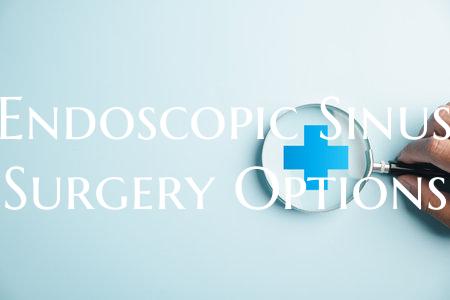
Endoscopic Sinus Surgery Options
Introduction: Endoscopic sinus surgery is a common procedure used to alleviate chronic sinus issues such as inflammation, infections, and blockages that cause discomfort and difficulty breathing. If you have been recommended for endoscopic sinus surgery, it is essential to understand the different options available to you. This article aims to provide insight into the various endoscopic sinus surgery options to help you make an informed decision regarding your sinus health.
Types of Endoscopic Sinus Surgery: 1. Functional Endoscopic Sinus Surgery (FESS): Functional Endoscopic Sinus Surgery, or FESS, is the most common type of endoscopic sinus surgery. It involves using a small, thin tube with a camera attached to it (endoscope) to navigate through the nasal passages and remove blockages, polyps, or damaged tissue that may be causing sinus issues. FESS is minimally invasive and aims to improve sinus drainage and airflow without external incisions.
2. Balloon Sinuplasty: Balloon sinuplasty is a newer and less invasive procedure that can be an alternative to traditional sinus surgery in certain cases. During balloon sinuplasty, a small balloon catheter is inserted into the sinus cavity and inflated to gently widen the sinus opening, promoting drainage and ventilation. This option is associated with less bleeding and a quicker recovery time compared to traditional surgery.
3. Image-Guided Surgery: Image-guided surgery utilizes advanced imaging technology, such as CT scans, to provide real-time mapping of the sinus anatomy during surgery. This helps the surgeon navigate more precisely and target specific areas for treatment. Image-guided surgery is often recommended for complex sinus issues or revision surgeries where traditional techniques may have limitations.
4. Revision Endoscopic Sinus Surgery: In some cases, patients may require revision endoscopic sinus surgery if the initial procedure did not provide the desired relief or if new issues have developed. Revision surgery may involve addressing scar tissue, recurrent polyps, or persistent inflammation to improve sinus function and alleviate symptoms.
Considerations for Choosing the Right Option: When considering your endoscopic sinus surgery options, it is essential to consult with an ENT specialist who can evaluate your individual case and recommend the most suitable approach. Factors such as the severity of your sinus issues, previous surgical history, and overall health will influence the choice of procedure. Additionally, discussing the potential risks, benefits, and expected outcomes with your surgeon can help you feel confident in your decision.
Conclusion: Endoscopic sinus surgery offers effective solutions for chronic sinus problems, and understanding the available options is crucial for achieving successful outcomes. Whether you undergo FESS, balloon sinuplasty, image-guided surgery, or revision surgery, working closely with your healthcare provider and being informed about the benefits and considerations of each option will guide you towards better sinus health and improved quality of life.